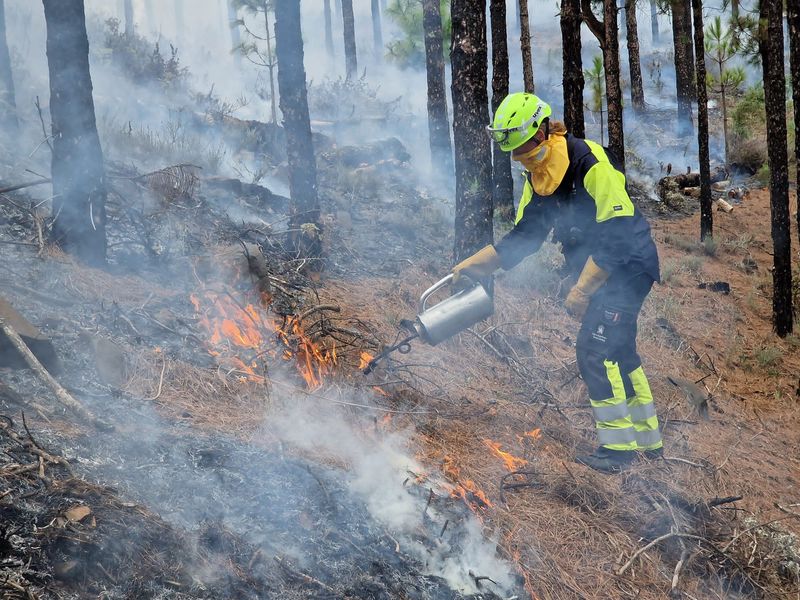On November 10, the project results presentation day was held at the Diagonal Besós Campus (UPC), On 10 November, the Diagonal Besós Campus (UPC), Barcelona, hosted the presentation of the results of the WUICOM project – Fire Resilient Interface Communities in Barcelona (2021-2023). The consortium formed by the Universitat Politècnica de Catalunya, the Universitat Oberta de Catalunya and the Pau Costa Foundation has worked to analyse the city’s vulnerability to forest fires in order to propose actions to mitigate the risk.
“WUICOM-BCN has been based on an analysis of nine Barcelona neighbourhoods in the urban-wildland interface to quantify their degree of structural, socioeconomic and social vulnerability, to see what the priorities are, and to propose actions. To this end, spaces for co-creation and dialogue have been created to seek inclusive solutions that contribute to increasing resilience to wildfires,” said Elsa Pastor, coordinator of the project, at the presentation of the results.

Of the neighbourhoods analysed, the Rectoret and Sant Genís dels Agudells neighbourhoods were selected for a more in-depth analysis as these neighbourhoods have different social and risk contexts. The Rectoret is much more exposed to a large wildfire and Sant Genís dels Agudells, with more recurrent, topographical fires. Specifically, we have determined the vulnerabilities of infrastructures as fire and smoke can impact on these two neighbourhoods; of the social fabric, what their concerns are and how they relate to the risk of fire and at the same time of being able to manage an emergency; and ecosystemic, i.e., mapping of habitats and uses of the sun in both neighbourhoods. All this, together with the fire history, has made it possible to determine how vulnerable these neighbourhoods are to wildfires.
“What has been generated is a strategic proposal for Barcelona City Council to manage the risk of wildfires. For example, among the proposals is the creation of an advisory committee to help manage the risk in the different neighbourhoods to assess the need to create protection strips, clean interior plots, or signage issues; to make use of disused spaces in the neighbourhoods that are now spaces where vegetation grows, or to carry out educational activities in schools” explains Guillem Canaleta of the Pau Costa Foundation.

In fact, the strategic proposal presented is articulated in five axes: improvement of the implementation of perimeter protection strips; management of community transformation spaces; planning of self-protection, confinement and evaluation strategies; accompaniment and advice service for forest fire risk; and design of Virtual Reality experiences.
On this last point, during the presentation, virtual reality glasses were shown that allow you to see how a fire burns from a bird’s eye view and how it burns from the ground. This is an awareness-raising tool that the project has developed. In addition, representatives of the neighbourhood associations of the two neighbourhoods have also participated, sharing good practices that they are carrying out (i.e. whatsapp coordination groups or lists of vulnerable people) and that can be extrapolated to other neighbourhoods.

“This day has served to share and discuss the results of the project with all stakeholders, including the Barcelona City Council, Barcelona Fire Department, Fire Department of the Generalitat, Barcelona Provincial Council, Collserola Natural Park and representatives of neighbourhood associations. From this joint discussion we hope to find the synergies and complicities necessary for the transformation of Barcelona’s mountain neighbourhoods into forest fire resilient spaces”, concludes Guillem Canaleta.






